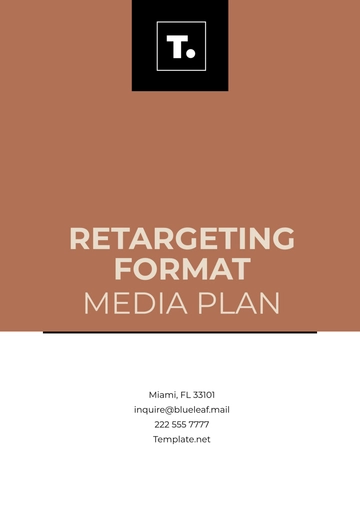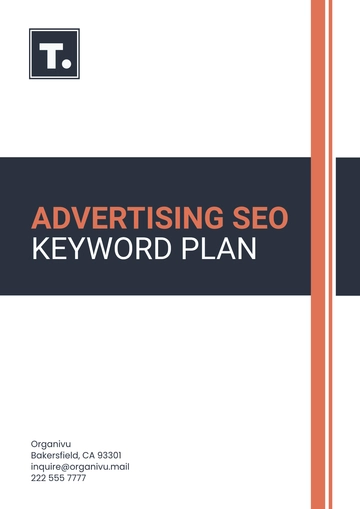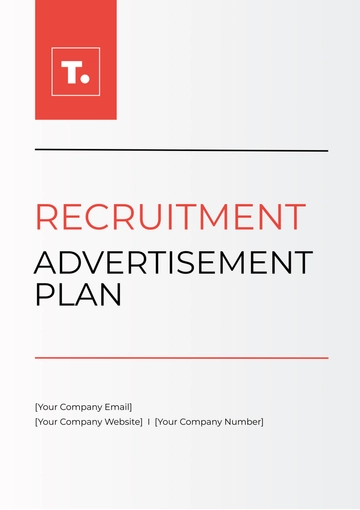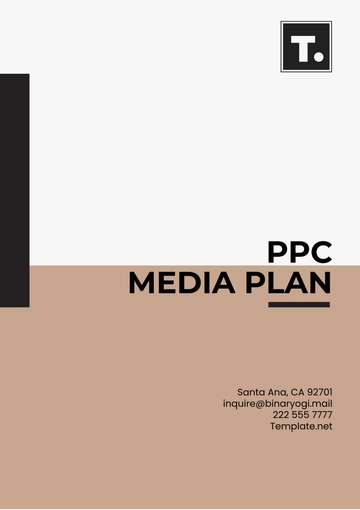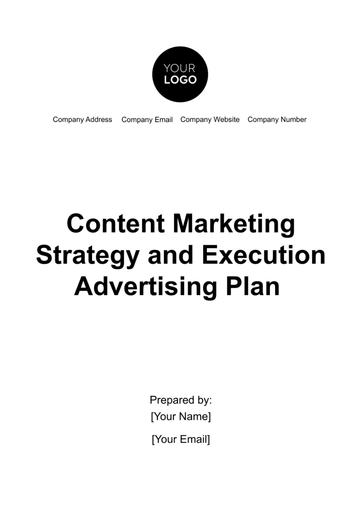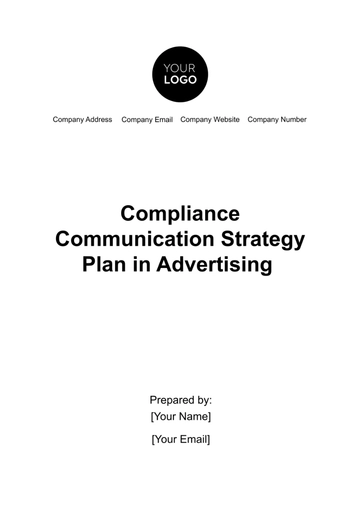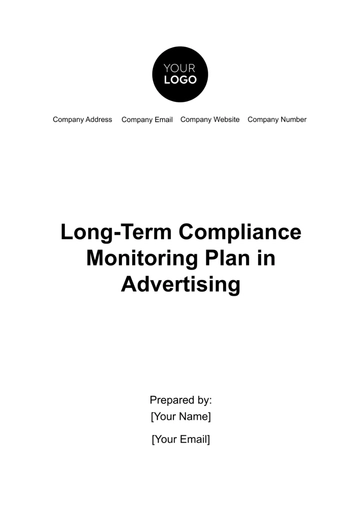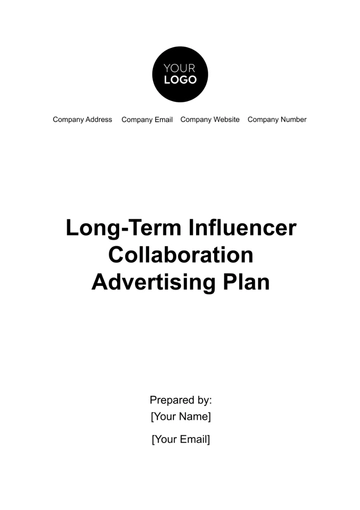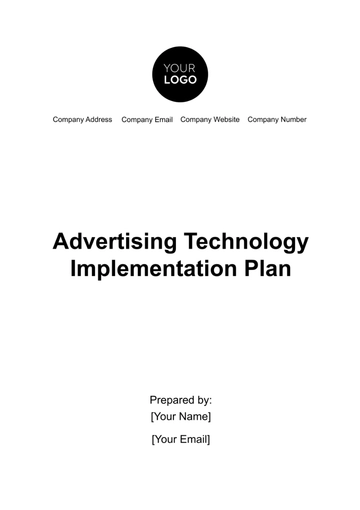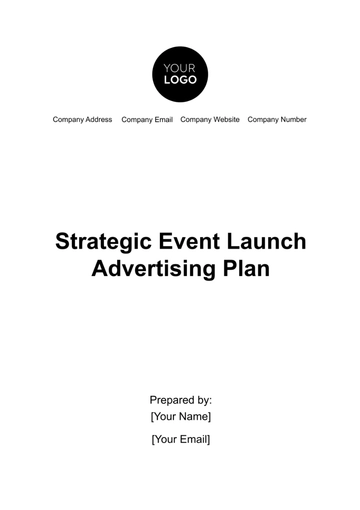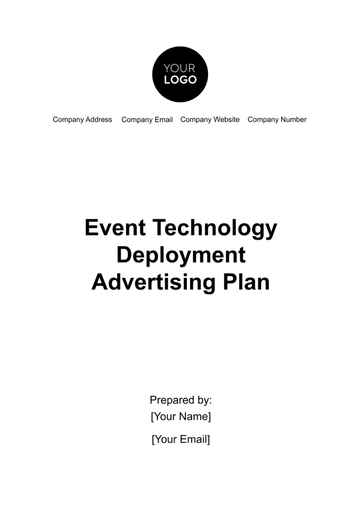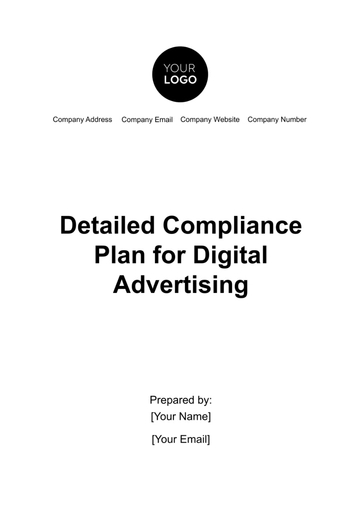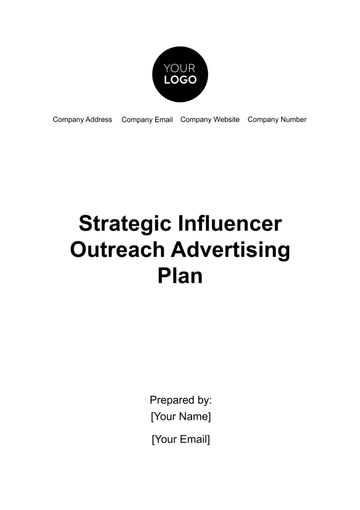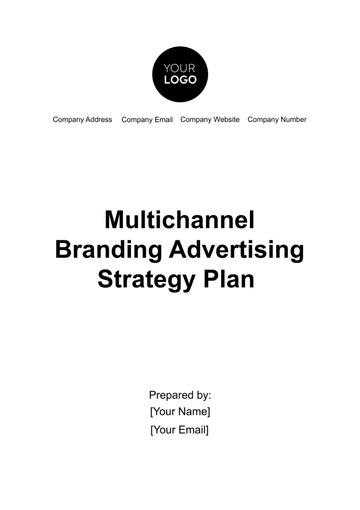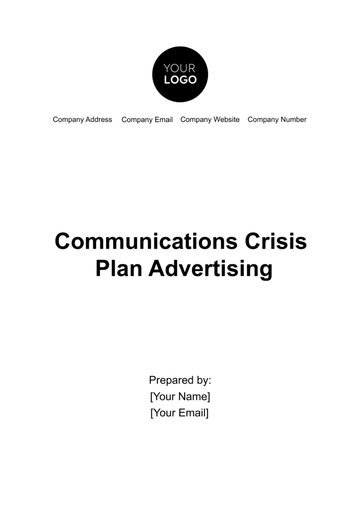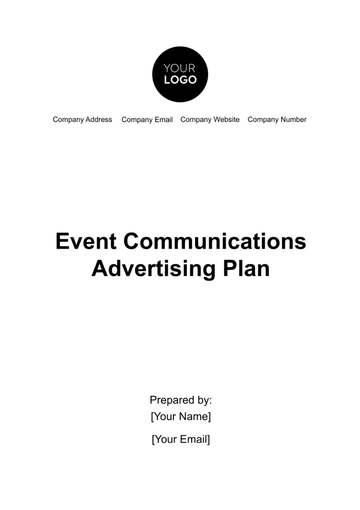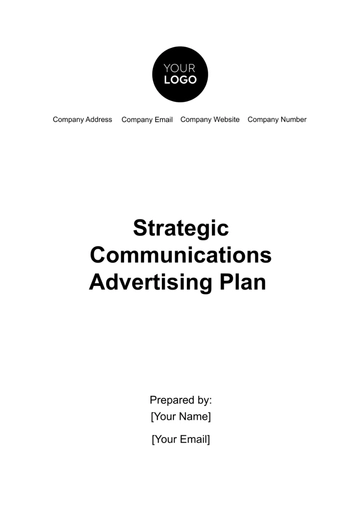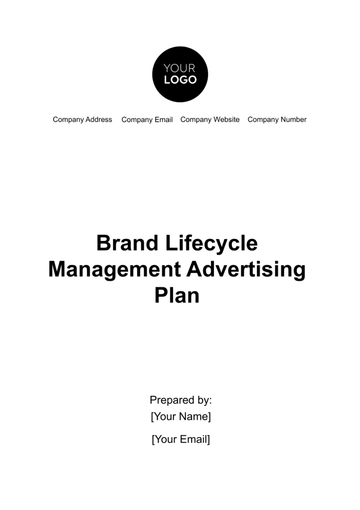Free Advertising Detailed Launch Sequence Plan
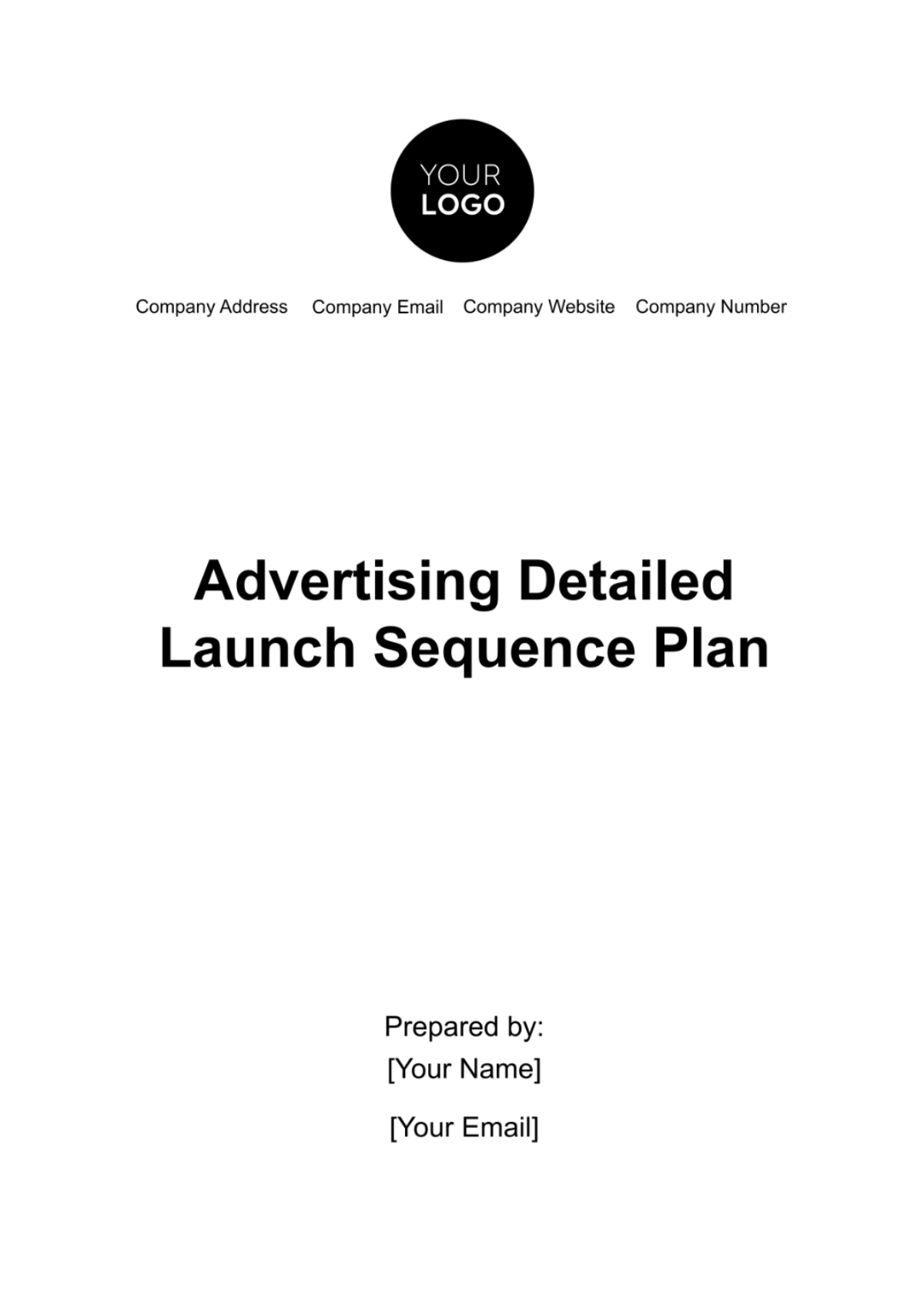
I. Introduction
The launch sequence for [Your Company Name]'s advertising campaign is a critical process that combines strategic planning, creative innovation, and meticulous execution. Our approach is designed to capture the attention of our target audience and to create a lasting impact that drives business growth and brand recognition. This document provides a detailed breakdown of our launch sequence, ensuring that each step aligns with our overarching goals.
Objective Setting
In this initial stage, we establish clear, measurable objectives for the campaign. These objectives are aligned with our client's business goals and market positioning. We define specific goals such as increasing brand awareness by 30%, boosting lead generation by 40%, and achieving a customer engagement rate that exceeds industry standards by 20%. The objective-setting process involves:
Stakeholder Meetings: These are intensive, collaborative sessions where we engage with clients to deeply understand their vision, values, and specific goals. Utilizing a variety of tools such as SWOT analysis and brainstorming, we explore various aspects of their brand and market position, ensuring that our campaign reflects their unique identity and aspirations.
KPI Identification: This involves a detailed process where we identify and define key performance indicators that are not only relevant to the campaign goals but also quantifiable and aligned with industry benchmarks. For instance, we might focus on metrics like click-through rates, conversion rates, and social media engagement levels, setting clear targets for each.
Goal Alignment: In this step, we meticulously ensure that the campaign goals are not only aligned with the client's broader marketing strategy but also complement their long-term business objectives. This includes aligning campaign goals with their sales targets, market expansion plans, or brand positioning efforts.
Strategic Framework Development
Here, we detail the creation of a strategic framework that guides the campaign's direction. This framework encompasses market research, audience analysis, competitive landscape evaluation, and the selection of appropriate media channels. Developing a robust strategic framework is pivotal for guiding the campaign in a direction that ensures maximum impact. This stage encompasses:
Market Research: This stage involves comprehensive research, utilizing both primary and secondary sources to gather insights about current market trends, customer behaviors, and preferences. We also conduct competitive analysis to understand the positioning and strategies of key players in the market, which helps in differentiating our campaign.
Audience Analysis: Here, we profile the target audience using data-driven approaches, including demographic analysis, psychographic profiling, and consumer behavior studies. This detailed analysis helps in crafting messages that not only resonate with the audience's interests and needs but also trigger emotional connections.
Channel Selection: Our approach to selecting media channels is data-driven and strategic. We analyze various channels' reach, audience demographics, engagement levels, and ROI to determine the most effective mix for the campaign. This could include a combination of digital platforms, traditional media, and emerging channels.
Creative Direction Setting: In setting the creative direction, we combine the insights gained from our strategic framework with creative innovation. This involves brainstorming sessions, mood board creation, and concept testing. We focus on defining the campaign’s tone, style, and key messages that align with the strategic objectives and resonate with the target audience.
This strategic groundwork ensures that our campaign is not only creative and engaging but also deeply rooted in a strategy that speaks directly to the intended audience and drives measurable results.
II. Pre-Launch Phase ([Month Year] - [Month Year])
The Pre-Launch Phase is a pivotal period in our advertising campaign, focusing on meticulous planning, creative development, and strategic preparation. Below is an outline of the key activities during this phase, along with detailed descriptions:
Activity | Timeline | Responsibility |
Market Analysis | Jan 1 - Jan 15 | Market Research Team |
Campaign Conceptualization | Creative Department | |
Budget Allocation | Finance Department | |
Resource Mobilization | Operations Team | |
Pre-Launch Testing | QA Team |
Description:
Market Analysis: Conducting in-depth research to gather insights on industry trends, consumer behavior, and competitive dynamics. Synthesizing data to identify market opportunities and challenges.
In-Depth Industry Trends Analysis: Delving deep into current and emerging trends within the industry, utilizing a mix of quantitative data and qualitative insights to understand market dynamics.
Consumer Behavior Study: Conducting thorough research into consumer demographics, preferences, buying patterns, and psychographics to tailor the campaign to resonate deeply with the target audience.
Competitive Dynamics Evaluation: Analyzing competitors’ strategies, strengths, weaknesses, and market positioning to identify unique opportunities for differentiation.
Campaign Conceptualization: Engaging in creative brainstorming to generate campaign ideas. Evaluating and selecting concepts based on strategic alignment. Developing detailed storyboards to visualize the campaign narrative.
Concept Evaluation and Selection: Using a blend of creative intuition and strategic analysis to evaluate the viability of each concept, ensuring alignment with both market insights and business objectives.
Storyboard Development for Visualization: Creating detailed storyboards and mock-ups that bring the selected concepts to life, illustrating the campaign narrative, key messages, and visual aesthetics.
Budget Allocation: Developing a comprehensive budget, allocating funds across campaign elements, and conducting cost-benefit analysis to optimize resource allocation.
Comprehensive Financial Planning: Crafting a detailed budget that takes into account all facets of the campaign, from creative development to media buying and post-campaign analysis.
Cross-Channel Funds Distribution: Allocating funds strategically across various channels and campaign elements, ensuring a balanced investment that maximizes reach and impact.
Resource Mobilization: Identifying necessary resources, assembling a specialized team, and procuring technological tools and platforms for campaign execution.
Specialized Team Assembly: Handpicking a diverse team of professionals, each expert in their respective fields, to ensure a perfect blend of creativity, strategy, and execution capabilities.
Procurement of Advanced Technologies: Acquiring state-of-the-art technological tools and platforms that are essential for modern campaign execution, including digital marketing tools, analytics software, and content creation resources.
Pre-Launch Testing: Creating prototypes of campaign elements, conducting focus groups and surveys for feedback, and making final adjustments to the campaign based on this feedback.
Prototype Development and Refinement: Designing and developing prototypes for various campaign elements, such as digital ads, social media content, and print materials.
Comprehensive Focus Groups and Surveys: Conducting in-depth focus groups and surveys to gather targeted feedback on the prototypes, gauging responses, and gathering insights from the intended audience.
Iterative Feedback-Based Adjustments: Utilizing the feedback to make iterative adjustments and refinements to the campaign, ensuring that each element is finely tuned for maximum effectiveness and audience appeal.
This approach to the Pre-Launch Phase ensures that [Your Company Name]'s advertising campaign is not only creatively compelling but also strategically sound and data-driven. Each step is designed to build a strong foundation for a successful campaign launch.
III. Launch Phase ([Month Year])
The Launch Phase is when our advertising campaign makes its grand debut to the world. This critical phase involves strategic execution, active audience engagement, and responsive adjustments based on real-time data. Below is an outline of the key activities during this phase, complemented with detailed descriptions:
Activity | Timeline | Responsibility |
Media Rollout | Apr 1 - Apr 7 | Media Relations Team |
Social Media Activation | Social Media Team | |
Monitoring and Adjustment | Analytics Team |
Description:
Media Rollout: Implementing a meticulously coordinated launch across a variety of media channels including digital platforms, television, radio, and print media. This synchronization ensures a widespread and impactful reach from the onset.
Strategic Media Partnerships: Forming alliances with key media outlets and platforms to leverage their reach and influence. These partnerships are carefully selected to align with our target demographics and campaign objectives.
High-Impact Launch Event: Organizing a compelling launch event, possibly featuring live demonstrations, celebrity endorsements, or interactive experiences. This event is designed to generate substantial buzz and media coverage, serving as a powerful catalyst for the campaign's visibility and engagement.
Social Media Activation: Launching creative and immersive campaigns on platforms like Instagram, Facebook, Twitter, and LinkedIn. These campaigns are designed to foster engagement through contests, live Q&As, polls, and user-generated content initiatives.
Influencer Collaboration: Partnering with a diverse range of influencers whose followers align with our target audience. These collaborations involve curated content creation, product endorsements, and joint promotional events, amplifying the campaign’s reach and authenticity.
Dynamic Real-Time Interaction: Engaging with the audience actively through comments, direct messages, and live streams. This level of interaction not only boosts engagement but also helps in building a loyal community around the brand.
Monitoring and Adjustment: Employing sophisticated analytics tools to monitor key metrics like engagement rates, conversion rates, reach, and impressions across all campaign elements. This real-time tracking allows for a granular understanding of campaign performance.
In-Depth Audience Feedback Analysis: Actively collecting and analyzing feedback from various channels, including social media, customer surveys, and focus groups. This feedback provides valuable insights into audience preferences and perceptions.
Agile Campaign Adjustments: Remaining flexible and responsive to the insights gathered, enabling us to make swift and effective adjustments to the campaign. This could involve tweaking messages, altering media spends, or shifting focus to more successful elements.
This approach to the Launch Phase ensures that our campaign is not only strategically executed but also dynamically engaged with our audience, making adjustments as needed to maximize impact and effectiveness.
IV. Post-Launch Phase ([Month Year] - [Month Year])
Following the campaign launch, the Post-Launch Phase is instrumental in evaluating effectiveness, refining strategies, and documenting outcomes. Below is an overview, detailing the key activities and their descriptions for this phase:
Activity | Timeline | Responsibility |
Data Collection | May 1 - May 15 | Data Analysis Team |
Performance Analysis | Strategy Team | |
Feedback Implementation | Management Team | |
Final Report Preparation | Reporting Team |
Description:
Data Collection: Systematically collecting comprehensive data from various sources and tracking performance across multiple platforms.
Extensive Data Gathering: Aggregating data from various channels, including digital analytics, CRM systems, sales reports, and customer feedback forums.
Cross-Platform Performance Tracking: Monitoring and evaluating the campaign's effectiveness across different media channels to provide a comprehensive performance overview.
Performance Analysis: Conducting in-depth analysis of the collected data to assess audience engagement, reach, and conversion rates, and comparing results with industry benchmarks.
In-Depth Data Analysis: Utilizing advanced analytical tools to dissect and understand various metrics such as engagement rates, conversion rates, and overall reach.
Comparative Market Analysis: Benchmarking the campaign's performance against industry standards and competitors to gauge its relative success and areas for improvement.
Feedback Implementation: Analyzing customer feedback and implementing changes based on insights gained for continuous improvement of marketing strategies.
Customer Feedback Review: Examining feedback from customers and stakeholders to understand their perspectives and satisfaction levels.
Strategic Adjustments: Making informed adjustments to marketing strategies and tactics based on the feedback and analysis, focusing on continuous improvement.
Final Report Preparation: Compiling a detailed report summarizing campaign outcomes, learnings, and recommendations for future initiatives.
Comprehensive Campaign Overview: Documenting all aspects of the campaign, from execution to results, including successes and areas of improvement.
Insights and Recommendations: Providing actionable insights and strategic recommendations for future campaigns based on the learnings from the current campaign.
This enhanced approach to the Post-Launch Phase ensures a thorough evaluation of the campaign, allowing [Your Company Name] to refine strategies continually and build on successes for future marketing endeavors.
V. Evaluation and Future Planning ([Month Year])
The Evaluation and Future Planning phase is crucial for assessing the overall success of the campaign and setting the course for future marketing efforts. This phase focuses on comprehensive review, analysis, and strategic planning for upcoming initiatives. Below we detail out the key activities and their descriptions for this phase:
Activity | Timeline | Responsibility |
Feedback Review | Jul 1 - Jul 10 | Client Relations Team |
Performance Metrics Analysis | Analytics Team | |
Strategy Refinement and Planning | Strategy Team |
Description:
Feedback Review: Gathering and analyzing feedback from a variety of sources including clients, customers, and internal teams to gauge overall satisfaction and impact. Looking at both the qualitative aspects of feedback for insights into customer experience and the quantitative data for performance metrics.
Performance Metrics Analysis: Comparing the campaign's performance against the predefined key performance indicators such as ROI, engagement rates, conversion rates, and reach. Identifying the successes of the campaign and areas where expectations were not met, to understand potential gaps in execution or strategy.
Strategy Refinement: Refining marketing strategies based on campaign insights and developing a plan for future marketing initiatives. Developing a roadmap for upcoming marketing initiatives, setting objectives and strategies that build on the learnings and successes of the current campaign.
VI. Conclusion
This launch sequence plan for [Your Company Name] represents a comprehensive approach to executing a successful advertising campaign, with each phase playing a crucial role in achieving our desired outcomes. Our focus on detailed planning, execution, and evaluation ensures that we remain at the forefront of advertising excellence
- 100% Customizable, free editor
- Access 1 Million+ Templates, photo’s & graphics
- Download or share as a template
- Click and replace photos, graphics, text, backgrounds
- Resize, crop, AI write & more
- Access advanced editor
Unleash your advertising campaign's full potential with Template.net's Advertising Detailed Launch Sequence Plan Template. This fully editable and customizable template is designed to streamline your launch strategy. Easily editable in our AI Editor Tool, it offers convenience and dependable efficiency. Enhance your marketing approach with this invaluable resource, promising a meticulously crafted launch sequence plan. Professionals, elevate your advertising game today!
You may also like
- Finance Plan
- Construction Plan
- Sales Plan
- Development Plan
- Career Plan
- Budget Plan
- HR Plan
- Education Plan
- Transition Plan
- Work Plan
- Training Plan
- Communication Plan
- Operation Plan
- Health And Safety Plan
- Strategy Plan
- Professional Development Plan
- Advertising Plan
- Risk Management Plan
- Restaurant Plan
- School Plan
- Nursing Home Patient Care Plan
- Nursing Care Plan
- Plan Event
- Startup Plan
- Social Media Plan
- Staffing Plan
- Annual Plan
- Content Plan
- Payment Plan
- Implementation Plan
- Hotel Plan
- Workout Plan
- Accounting Plan
- Campaign Plan
- Essay Plan
- 30 60 90 Day Plan
- Research Plan
- Recruitment Plan
- 90 Day Plan
- Quarterly Plan
- Emergency Plan
- 5 Year Plan
- Gym Plan
- Personal Plan
- IT and Software Plan
- Treatment Plan
- Real Estate Plan
- Law Firm Plan
- Healthcare Plan
- Improvement Plan
- Media Plan
- 5 Year Business Plan
- Learning Plan
- Marketing Campaign Plan
- Travel Agency Plan
- Cleaning Services Plan
- Interior Design Plan
- Performance Plan
- PR Plan
- Birth Plan
- Life Plan
- SEO Plan
- Disaster Recovery Plan
- Continuity Plan
- Launch Plan
- Legal Plan
- Behavior Plan
- Performance Improvement Plan
- Salon Plan
- Security Plan
- Security Management Plan
- Employee Development Plan
- Quality Plan
- Service Improvement Plan
- Growth Plan
- Incident Response Plan
- Basketball Plan
- Emergency Action Plan
- Product Launch Plan
- Spa Plan
- Employee Training Plan
- Data Analysis Plan
- Employee Action Plan
- Territory Plan
- Audit Plan
- Classroom Plan
- Activity Plan
- Parenting Plan
- Care Plan
- Project Execution Plan
- Exercise Plan
- Internship Plan
- Software Development Plan
- Continuous Improvement Plan
- Leave Plan
- 90 Day Sales Plan
- Advertising Agency Plan
- Employee Transition Plan
- Smart Action Plan
- Workplace Safety Plan
- Behavior Change Plan
- Contingency Plan
- Continuity of Operations Plan
- Health Plan
- Quality Control Plan
- Self Plan
- Sports Development Plan
- Change Management Plan
- Ecommerce Plan
- Personal Financial Plan
- Process Improvement Plan
- 30-60-90 Day Sales Plan
- Crisis Management Plan
- Engagement Plan
- Execution Plan
- Pandemic Plan
- Quality Assurance Plan
- Service Continuity Plan
- Agile Project Plan
- Fundraising Plan
- Job Transition Plan
- Asset Maintenance Plan
- Maintenance Plan
- Software Test Plan
- Staff Training and Development Plan
- 3 Year Plan
- Brand Activation Plan
- Release Plan
- Resource Plan
- Risk Mitigation Plan
- Teacher Plan
- 30 60 90 Day Plan for New Manager
- Food Safety Plan
- Food Truck Plan
- Hiring Plan
- Quality Management Plan
- Wellness Plan
- Behavior Intervention Plan
- Bonus Plan
- Investment Plan
- Maternity Leave Plan
- Pandemic Response Plan
- Succession Planning
- Coaching Plan
- Configuration Management Plan
- Remote Work Plan
- Self Care Plan
- Teaching Plan
- 100-Day Plan
- HACCP Plan
- Student Plan
- Sustainability Plan
- 30 60 90 Day Plan for Interview
- Access Plan
- Site Specific Safety Plan

